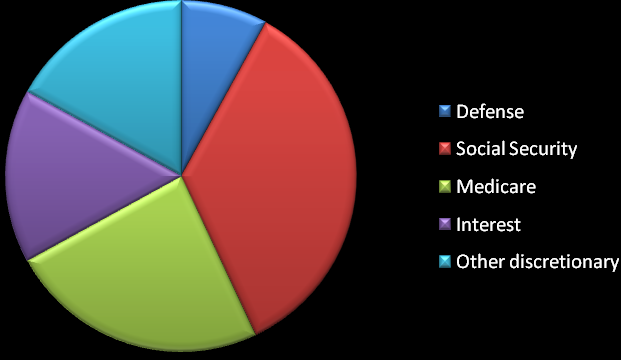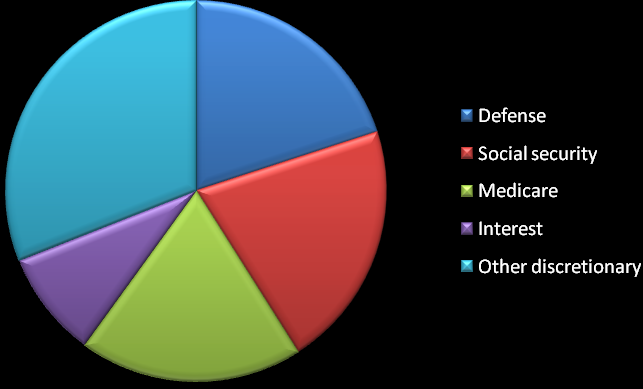Introduction
The comparison of the budgets of the two superstates may be essential for the further evaluation of the financial potentials of these two countries, or just for the research.
The paper is claimed o evaluate and compare the budgets of Saudi Arabia and the United States of America.
Comparison
For the year 2007, Saudi Arabia initially had been anticipating a budget shortage. Nevertheless, this was grounded on a tremendously traditional price supposition of $19 per barrel for Saudi oil and a supposed production of 7.7 Mbbl/d (1,220,000 m³/d). Both of these approximates turned out to be far below real extents. Consequently, as of mid-December 2005, the Saudi Finance Ministry was anticipating a huge budget surplus of $26.1 billion, on budget incomes of $104.8 billion (nearly twofold the state’s initial estimate) and expenses of $78.6 billion (28 percent over the endorsed budget extents). This excess is being applied for several reasons, comprising: paying down the public liability (to $164 billion from $176 billion); extra expenditure on education and other projects; augmented safety expenses (probably an additional 2.5 billion dollars) due to hazards from terrorists; and higher reimbursements to Saudi citizens through funding (for lodging, education, medicare, etc.). For 2007, Saudi Arabia is presuming an impartial budget, with incomes and expenditures of $74.6 billion each.
Despite the current surge in its oil revenue, Saudi Arabia goes on facing crucial long-term financial challenges, entailing high rates of redundancy (12 percent of Saudi publics), one of the world’s greatest population increase extents, and the resulting requirement for augmented government expenditure. These entire place weights on Saudi oil incomes. The Kingdom also is facing crucial safety threats, entailing several terrorist attacks (on foreign workers, chiefly) in 2003 and 2004. In retort, the Saudis have sloped up expenditure in the safety sphere (reportedly by 50 percent in 2007, from $5.5 billion in 2006). In 2007, Saudi Arabia’s citizens got around $20,700 per person.

As for the USA, it is necessary to mention, that Treasury alterations of prior year data entail a $164 million augment in various federal fund remove taxes for 2007 and other slight corrections to 2006 and 2007. Moreover, the data have been regulated to reproduce anticipated Treasury rectifications for Tennessee Valley Authority debt that will augment debt in 2006 and 2007by $300 million and $272 million, correspondingly.
GAO describes “earmarking” as “designating any segment of a lump-sum quantity for particular aims by means of lawmaking language.” Earmarking can also denote “dedicating compilations by law for an exact reason.” Sometimes, lawmaking language may regulate federal agencies to spend funds for special schemes. In other cases, earmarks refer to courses in misappropriation committee accounts, which are not law. Different institutions have evaluated the total figure and amount of earmarks. An estimated 16,000 assigns comprising nearly $48 billion in expenditures were interleaved into greater, often unrelated bills for the year 2006. While the amount of earmarks has increased in the past decade, the total quantity of earmarked funds is small relative to large federal expenditure.
The U.S. Federal Government accounted for $2,568 billion in revenue in 2007, while expenditure accounted for $2,730 billion, creating a total shortfall of $162 billion, which was adjoined to the United States public debt. Since 1970, the U.S. Federal Government has experienced deficits for all but four years (1998-2001) adjoining to a complete debt of $9.34 trillion as of April 24, 2008.
Personal income taxes (43%) and Social Safety/Social Insurance taxes (35%) are the central receipt sorts. Social Security, Defense, and Medicare/Medicaid spending are the main spending categories, at roughly 20% of total expenditures each.

Insurance plans
Saudi Arabia tested with a social safety system some time ago, intended to entail foreign workers and retirees. The plan was terminated a few years later, nevertheless, one of the matters being the temporary nature of the working populace, largely created of emigrants.
There are no state annuity systems in Saudi Arabia for foreign emigrants, nevertheless, some state organizations and some international corporations have business pension plans. If one was paying into a state annuity structure while working in his or her home country, it is necessary to continue to do so, even if in a decreased form, such as Class 3 payments. These are generally one of the best speculations that may be made, for the unremitting return they offer after retirement. Nevertheless, emigrants should take improve of their high disposable revenue in Saudi Arabia to set up an individual pension scheme. There are lots of corporations providing a variety of schemes, either grounded on lump sums or maintained by regular reductions.
To compare the data with the USA, it is necessary to state, that it has larger experience in providing social insurance and making pension plans. It is stipulated by the particularities of historical background. The Pension Benefit Guaranty Corporation (PBGC) defends the departure advantages of nearly 44 million workers and retirees without the use of tax dollars from the communal fund. PBGC’s revenue is obtained from insurance payments paid by 30,460 assured defined benefit pension schemes, assets from expired trusted plans, investment revenue, and revivals from companies accountable for concluded underfunded plans. Premium revenue totaled about $1.6 billion in 2007.
For plan years starting in 2008, all single-employer pension schemes pay a basic flat-rate premium of $33 per contributor per year. Underfunded pension schemes pay an extra variable-rate charge of $9 per $1,000 of unfunded vested revenues. The premium for the lesser multiemployer program is $9 per contributor per year. A retirement payment of $1,250 per participant per year is stipulated by certain sorrow and involuntary plans ending appearing on or after January 1, 2006, allocated for three years after the retirement.
With the performing of the Deficit Reduction Act of 2005, general payment rates attained current levels for plan years starting on or after January 1, 2006. The innovative law offers for indexing basic payments for wage inflation starting in 2007, and a new retirement payment charged when a company transports an underfunded pension plan to the PBGC. Set at $1,250 per contributor per year for convinced plan extinctions starting after 2005 and before 2011, the innovative premium is allocated for three years after an extinction. Special regulations apply in certain cases entailing economic failure: the three-year reimbursement period starts after the renouncement of bankruptcy, and the payment is adjusted only if the bankruptcy is filed on or after October 18, 2005. This regulation does not alter variable-rate premium indicts.
At the time of selecting for the pension scheme, the policymakers describe the retirement age; at this age, generally, will be offered with one-third of the accrued amount as a lump sum premium. This lump sum payment (focus on a maximum of one-third of the amount) is tax-free in the offers of the policyholder. The equilibrium quantity is exchanged into monthly revenue, also regarded as pension. In other words, the policyholder can select to invest the balance sum with any life insurer to gain monthly revenue for the rest of his life. The period over which he will get the monthly income is known as the annuity period; the monthly income is taxable as per the policy holder’s tax lump.
Conclusion
A significant feature of most pension plans attainable in the Arabian market is the lack of an insurance benefit. The taxes (i.e. premium for life cover) would be subtracted from the pension plan payment allocated by the state and the same would influence the returns.
References
Blanche, Ed. “Saudi Oil Deal: A Landmark Agreement.” The Middle East: 2001: 4.
Cordesman, Anthony H. Saudi Arabia Enters the Twenty-First Century: The Political, Foreign Policy, Economic, and Energy Dimensions. Westport, CT: Praeger, 2003.
“The World Economy.” National Institute Economic Review : 9.